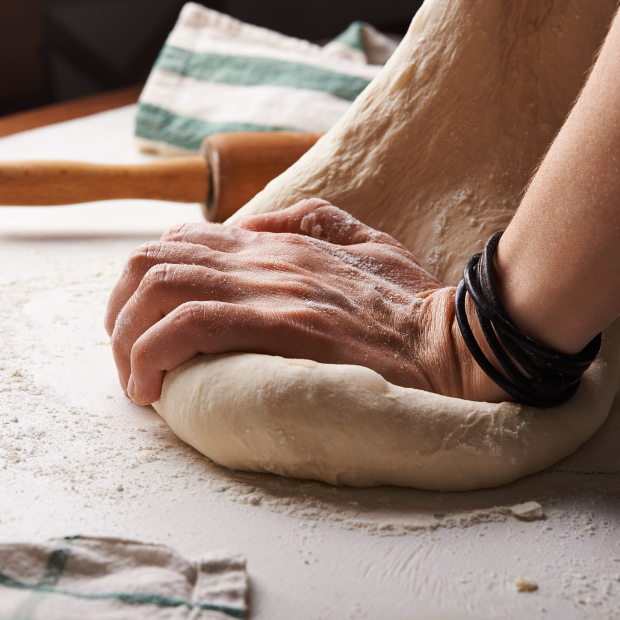Ever wondered what sets sourdough apart from your average government loaf?
The long fermentation uses yeast and lactobacilli (the same stuff in your yoghurt), giving it the large bubbles in the bread and its trademark ‘sour’ taste.
Most sourdough is also made with stone-ground or other unrefined flours (not just wheat flour but rye, spelt and so forth). The long fermentation breaks down some of the gluten in the bread, making it a little more digestible to those avoiding gluten.
Using wholegrain flours also increases the nutritional value of the bread and can reduce the glycemic index of the bread (making it low GI).
Vegetable purees are also used to make more interesting mixes.
Sourdough (and other craft bread) enthusiasts spend weeks brewing up their perfect culture – some do it for the health benefits, while others do it for the sheer enjoyment of making great bread.
A ‘wild-caught’ starter culture is made from water and flour, using yeasts and bacteria naturally occurring in the environment, as opposed to adding commercially available yeasts.
This Belgium baker has been creating a library of these cultures from all over the world.
If you want to become a bread aficionado, here’s how you can learn to make your own sourdough.
Or if getting off the couch to knead your own bread is a bit too much, simply scroll through Instagram to view some beautiful breads. It’s worth it.
Blondie and rye, homebaker and Daniel Larsson, Swedish baker.
ALSO READ…

